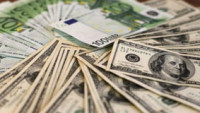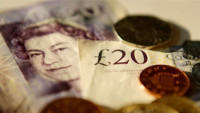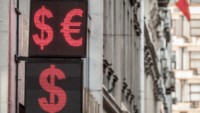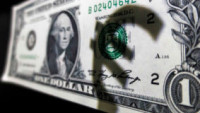 USD
USD
EUR/USD drifted higher yesterday, bolstered by a continued broad-market easing in US dollar buying pressure. Federal Reserve Chair Jerome Powell all but confirmed that the central bank will pivot into a rate-cutting cycle on 18 September during an appearance at the Jackson Hole Economic Symposium last Friday, topping out market appetite once again. Mixed prints in US housing price data from June gave investors little to go on yesterday. The S&P/Case-Shiller Home Price Indices, meanwhile, rose 6.5% YoY, less than the previous period’s revised 6.9%, but still more than the expected 6.0%. US Q2 Gross Domestic Product figures will be released tomorrow and are expected to hold steady at 2.8% on an annualized basis. However, the key data print this week will be Friday’s US Personal Consumption Expenditure (PCE) Price Index inflation reading for July, which is expected to come in marginally higher YoY at 2.7% from 2.6% and hold flat at 0.2% MoM. This should help price in expectations of rate cuts.
EUR
The euro continued its recent strength against the US dollar and weakness versus Sterling in yesterday’s trading session. Helping to add pressure on the euro against the pound are expectations that the process of policy-easing (ie cutting interest rates) by the Bank of England (BoE) in the rest of 2024 would be slower than other central bankers from its major peers. BoE Governor Andrew Bailey said the central bank would “be careful not to cut interest rates too quickly or by too much” in his speech at the Jackson Hole Symposium on Friday. On the Eurozone front, the Euro underperformed yesterday as investors seem confident that the European Central Bank (ECB) will cut interest rates again in the September meeting. Easing price pressures in the shared currency region and uncertain economic outlook have prompted ECB rate cut expectations.
GBP
Sterling tested a fresh multi-year high yesterday against the US dollar and eased into a 29-month peak as it continues to capitalise on a broad-market US dollar sell-off. This is being supported as investors are betting on a September rate cut from the Federal Reserve. GBP/USD has closed in the green for all but two of the last 14 consecutive trading days as high side technical barriers have been relatively easy to breach. There is little of note in the economic data calendar today.
CAD
The Canadian dollar continued its recent strength against the US dollar. General USD weakness accounts for some of the CAD gains but position adjustment (CAD short covering) could also be a likely driver of the CAD’s buoyancy at the moment. Also supporting CAD has been recent rising oil prices. Crude Oil prices have risen this week due to concerns over potential supply disruptions, driven by fears of an escalating conflict in the Middle East and the possible shutdown of Libyan oil fields. Both the medium and short-term trends in USDCAD have recently turned bearish.












